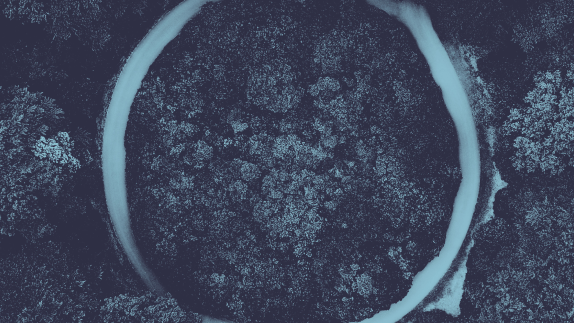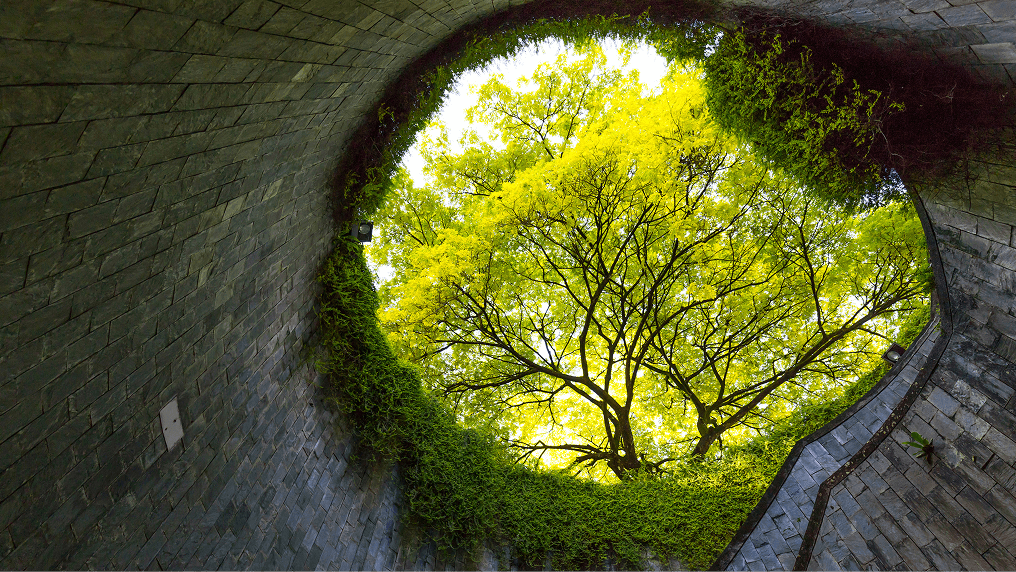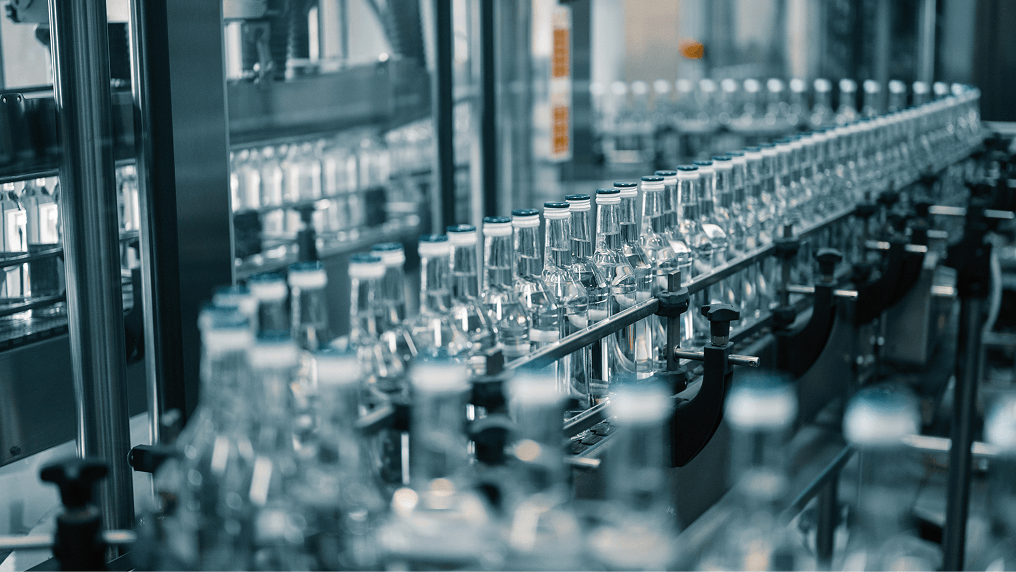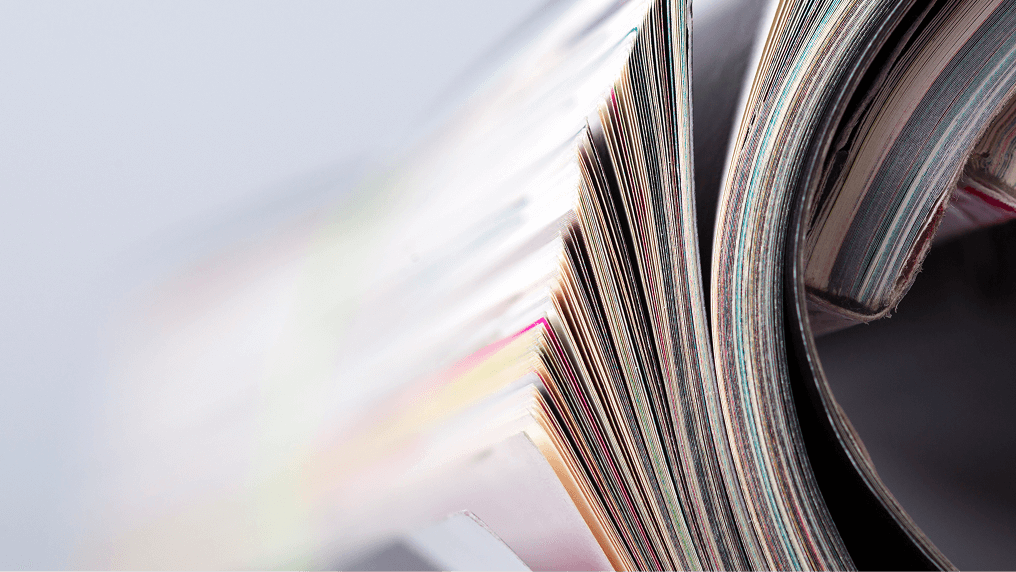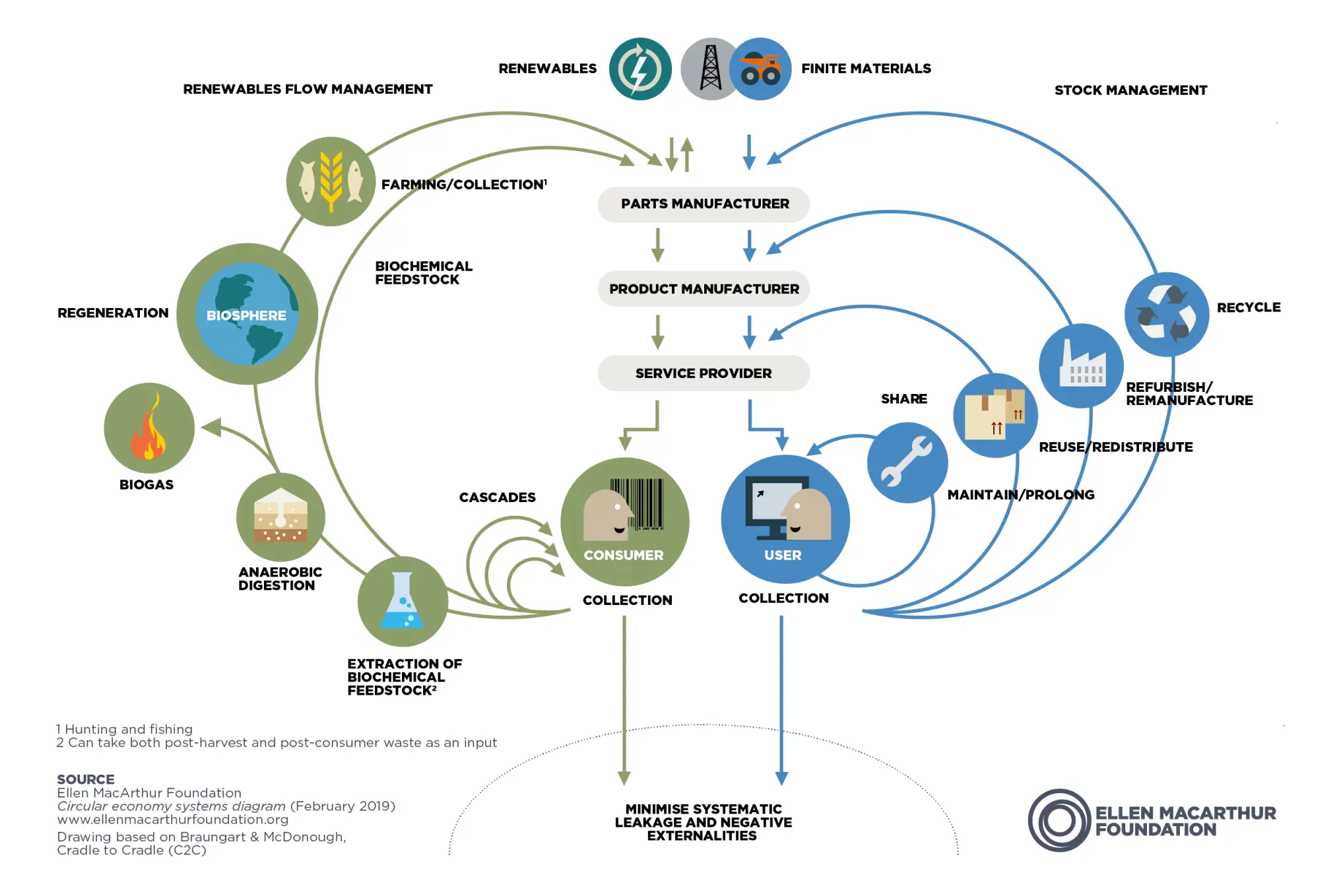
Dig deeper
Find out more about each side of the butterfly diagram – the biological cycle and the technical cycle. These pages focus on the different stages of the two cycles and explain the concepts used.
The circular economy system diagram, known as the butterfly diagram, illustrates the continuous flow of materials in a circular economycircular economyA systems solution framework that tackles global challenges like climate change, biodiversity loss, waste, and pollution. It is based on three principles, driven by design: eliminate waste and pollution, circulate products and materials (at their highest value), and regenerate nature.. There are two main cycles – the technical cycletechnical cycleThe processes that products and materials flow through in order to maintain their highest possible value at all times. Materials suitable for these processes are those that are not consumed during use - such as metals, plastics and wood. and the biological cyclebiological cycleThe processes - such as composting and anaerobic digestion - that together help to regenerate natural capital. The only materials suitable for these processes are those that can be safely returned to the biosphere.. In the technical cycle, products and materials are kept in circulation through processes such as reusereuseThe repeated use of a product or component for its intended purpose without significant modification., repairrepairOperation by which a faulty or broken product or component is returned back to a usable state to fulfil its intended use., remanufactureremanufactureRe-engineer products and components to as-new condition with the same, or improved, level of performance as a newly manufactured one. and recycling. In the biological cycle, the nutrients from biodegradable materials are returned to the Earth to regenerate nature.

